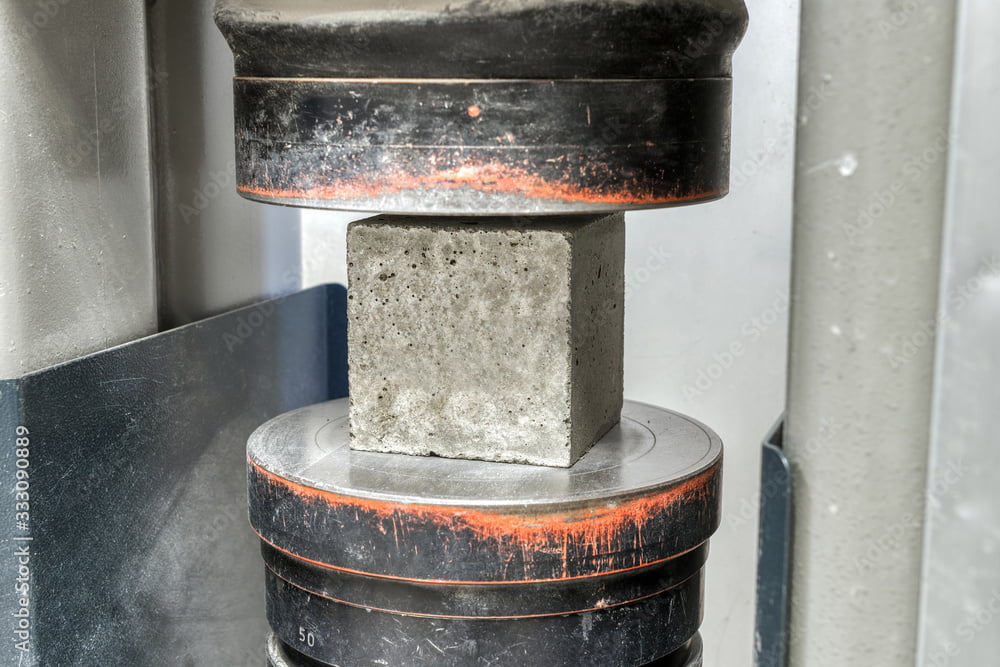Welcome to the compressive strength of concrete test article. The strength of the materials used in modern architecture plays a major role in ensuring its structural integrity. Among these materials, concrete stands out for its versatility and durability, making it a cornerstone in construction projects worldwide. As a civil engineer and writer, I find concrete’s compressive strength fascinating and important for construction safety and longevity. This article explores the significance of compressive strength in concrete, emphasizing its testing objectives, procedures, and standards following ASTM recommendations. It concludes with a perceptive analysis of the subject.
What is Compressive Strength of Concrete?
Compressive strength is a paramount property of concrete that measures its ability to withstand loads that would reduce the material’s size. Defined technically, it is the maximum load per unit area that concrete can bear without undergoing a significant change in shape. This strength is crucial as it directly influences the load-bearing capacity of structures such as buildings, bridges, and dams, ensuring they remain safe and functional over their intended lifespan.
Function of Compressive Strength of Concrete
The primary function of compressive strength in concrete is to determine the material’s suitability for specific structural applications. It ensures that the concrete mix used in construction can withstand the anticipated stresses and strains during its service life. By understanding a concrete’s compressive strength, engineers can predict how structures will behave under various loads, enabling the design of safer and more reliable infrastructure.
Objective of Compressive Strength of Concrete Test
The compressive strength test has multiple objectives, including:
- To assess the quality of concrete in relation to the specifications for a particular project.
- To gauge the potential load-bearing capacity of a concrete sample, which helps in the design and analysis of structural elements.
- To compare the strength properties of different concrete mixes, aiding in the selection of the most appropriate mix for specific requirements.
Procedure of the Test according to ASTM

The American Society for Testing and Materials (ASTM) provides standardized procedures for testing the compressive strength of concrete, ensuring consistency and reliability in the results. The procedure, as outlined in ASTM C39/C39M, involves several key steps:
- Sample Preparation: Concrete samples are cast in cylindrical molds and cured.
- Curing: Samples are demolded after 24 hours and submerged in water for a specific period (usually 28 days).
- Testing: The cured samples are placed in a compression-testing machine.
- Load Application: A load is applied gradually at a constant rate until the sample fails.
- Result Recording: The maximum load at failure is recorded, and the compressive strength is calculated by dividing this load by the cross-sectional area of the sample.
Result and Calculation
The result of the compressive strength test is expressed in pounds per square inch (psi) in the US or megapascals (MPa) in the metric system. The calculation involves dividing the maximum load sustained by the specimen before failure by the cross-sectional area of the specimen, typically calculated as:
Compressive Strength=Maximum Load/Cross-Sectional Area
The standard values serve as benchmarks for assessing the quality of concrete used in construction. Below is a simplified table illustrating these standards:
Compressive Strength (psi)Compressive Strength (MPa)
| Age of Concrete | Strength Percentage (%) | Compressive Strength (psi) | Compressive Strength (MPa) |
| 7 Days | 65 | 2500-3000 | 17-21 |
| 14 Days | 90 | 3500-4000 | 24-28 |
| 28 Days | 99 | 4000-5000 | 28-35 |
You can also check, Why Do We Test Concrete Compressive Strength After 28 Days?
Basic introduction of concrete as a construction material-a review
The compressive strength of concrete is an important factor that affects how buildings are designed, how safe they are, and how long they last. Civil engineers can make sure that concrete satisfies the necessary criteria for certain applications by using standardized testing processes such as those described by ASTM. This knowledge and use of these rules makes it possible to build long-lasting and dependable infrastructure that can do its job for years to come. We must not underestimate the importance of thorough strength testing in preserving structural integrity as we advance architectural design and construction.
References :
(10) How do we calculate the strength of concrete from 7 to 28 days? – Quora









